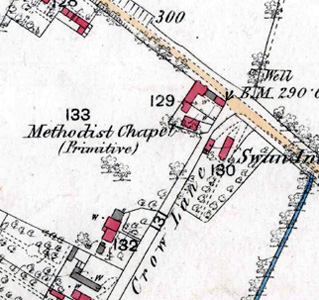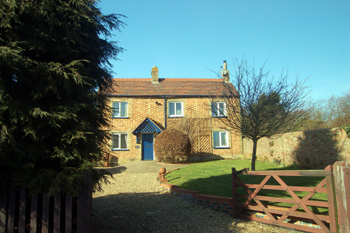Primitive Methodists in Husborne Crawley
![The chapel exterior about 1900 [X21/756/17]](/CommunityHistories/HusborneCrawley/HusborneCrawleyImages/The chapel exterior about 1900 [X21-756-17].jpg)
The chapel exterior about 1900 [X21/756/17]
The Primitive Methodists were founded in 1811 as a breakaway movement from the Methodist church founded by John Wesley in 1740. They practised more involvement in the running of their church by laity than did the Wesleyan Methodists as well as a number of more fundamental beliefs.
On Sunday 30th March 1851 a census of all churches, chapels and preaching-houses of every denomination was undertaken in England and Wales. The local results were published by Bedfordshire Historical Records Society in 1975 as Volume 54, edited by D. W. Bushby. Clearly Primitive Methodism was flourishing in Husborne Crawley as a return was made by James Sibley, manager of the meeting. A Joseph Sibley had registered his house in Turnpike Road as a Baptist Meeting in 1845.
Sibley noted that there were seats for 70 worshipers in the dwelling house used by the Primitive Methodists as their meeting. Clearly this is too many for it to be an ordinary cottage, so perhaps it was held in a barn belonging to a private house. In the afternoon 43 people had attended, with 58 coming in the evening.

The Primitive Methodist chapel shown on a map of 1883
A purpose built Primitive Methodist chapel was erected in 1867. It stood on the north side of Crow Lane facing the Swan Inn. This chapel was first registered, by Thomas Penrose of Linslade [Buckinghamshire], the minister, on 24th June 1870. It stood in front of 2 Crow Lane on the left hand side of that plot close a few yards from the road.
![The chapel interior about 1900 [X21/756/18]](/CommunityHistories/HusborneCrawley/HusborneCrawleyImages/The chapel interior about 1900 [X21-756-18].jpg)
The chapel interior about 1900 [X21/756/18]
The chapel is last noted in a Directory of 1920. By the time of the next Directory held by Bedfordshire & Luton Archives & Records Service, 1924, it is no longer listed. The Rating and Valuation Act 1925 specified that every building and piece of land in the country was to be assessed to determine its rateable value. The valuer visiting Husborne Crawley used the 1901 Ordnance Survey 25 inches to the mile 2nd edition map of 1901. The valuer crossed out the image of the chapel and annotated it: "Gone".

2 Crow Lane February 2011